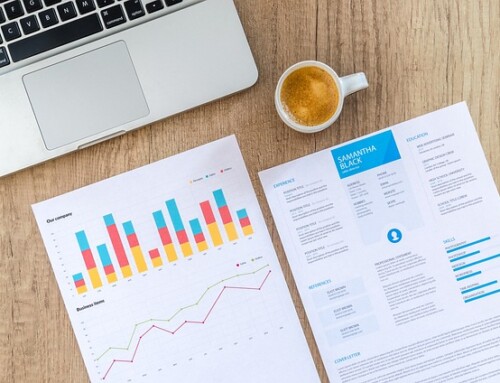Planning, budgeting, and forecasting are typically a three-step process to determine and outline the short and long-term financial goals of an organization.
The planning process, which includes planning, budgeting, forecasting, analysis, and reporting, presents a formidable challenge for many companies, regardless of their size or industry.
Planning is a crucial component for both financial management and operational performance, and it can greatly contribute to the overall success of a company, especially in the current business environment where disruptive competitors enter even the most tradition-bound industries.
- Planning provides a framework for the financial goals of a business, usually for the next three to five years.
- Budgets detail how the plan will be carried out on a monthly basis and encompass elements such as revenues, expenses, potential cash flow, and debt reduction. Traditionally, a company would designate a fiscal year and create a budget for that year. The budget can be adjusted based on actual revenues or by comparing actual financial statements to determine how closely they meet or exceed the budget.
- Forecasting takes historical data and current market conditions, and then makes predictions about how much revenue an organization can expect to generate in the coming months or years. Forecasts are often adjusted as new information becomes available.
«El 73% de las organizaciones ha informado de un cambio hacia una cultura de planificación continua en los últimos tres años.»
The Future of Planning, Budgeting and Forecasting, Survey 2016, FSN Publishing Ltd.
Companies should be able to:
- Quickly update plans and forecasts in response to new threats and opportunities.
- Identify and analyze the impact of changes as they occur.
- Strengthen the link between operational and financial plans.
- Improve communication and collaboration among plan contributors.
- Consistently deliver timely and reliable plans and forecasts, as well as contingency plans for a variety of possible events.
- Analizar las variaciones y desviaciones de los planes y tomar medidas correctivas de manera «“73% of organizations have reported a move to a culture of continuous
The process is typically managed by a Chief Financial Officer (CFO) and the finance department. However, the definition can be expanded to include all areas of organizational planning, including financial planning and analysis, supply chain planning, sales planning, workforce planning, and marketing planning.
Historical evolution of the budgeting process.
The basic practices of corporate accounting date back to the 15th century when Venetian investors kept records of their commercial expeditions to Asia using double-entry accounting, income statements, and balance sheets.
La palabra «presupuesto» proviene del antiguo término francés «bougette», que significa «pequeña bolsa». El gobierno británico comenzó a utilizar la frase «abrir el presupuesto» a mediados del siglo XVIII, cuando el canciller presentaba los estados financieros anuales. A finales del siglo XIX, las empresas comenzaron a utilizar regularmente el término «presupuesto» para sus finanzas.
Modern business forecasting emerged as a response to the economic devastation of the Great Depression in the 1930s. New types of statistics and statistical analysis were developed to help businesses better predict the future. Consulting firms emerged to assist companies in utilizing these new forecasting tools.
Accounting and forecasting were challenging in the early 20th century as they relied on laborious handwritten equations, accounting records, and spreadsheets. The advent of mainframe computers in the 1960s and personal computers in the 1980s accelerated the process. Software applications like Microsoft Excel became widely popular for financial reporting. However, Excel programs and spreadsheets were prone to input errors and became cumbersome when multiple departments or individuals needed to collaborate on a report.
In the early 2000s, companies gained access to increasingly large operational data sources, as well as information outside of corporate transaction systems such as weather, social sentiment, and econometric data. The abundance of data available for forecasting created the need for more sophisticated software tools to process it.
Numerous planning software packages emerged to handle this complexity of data, facilitating faster and simpler planning, budgeting, and forecasting processes in terms of both processing and collaboration. With predictive insights automatically extracted from the data, businesses could identify evolving trends and make proactive decisions, rather than relying solely on hindsight.
In today's landscape, cloud-based systems are becoming the standard, offering greater flexibility, security, and cost savings, thereby enabling organizations to generate accurate predictions and budgets with fewer errors.
Despite these advancements, companies still heavily rely on traditional spreadsheets. Seventy percent of businesses claim a significant dependence on spreadsheet reports, with only sixteen percent utilizing specialized on-premises software and a mere ten percent using cloud-based software for planning.
The Importance of Establishing a Timely Process (Budgeting)
Creating and implementing a robust planning, budgeting, and forecasting process helps organizations establish more accurate financial reporting and analysis, potentially leading to more precise forecasting and ultimately revenue growth.
Its significance is even more relevant in today's business environment, where disruptive competitors are entering even the most entrenched industries.
By embracing data and analytics alongside established planning and forecasting best practices, companies improve strategic decision-making and can be rewarded with more accurate plans and timely forecasts.
Overall, these tools and practices can save time, reduce errors, foster collaboration, and cultivate a disciplined management culture that provides a true competitive advantage.
Specifically, companies can:
- Quickly update plans and forecasts in response to new threats and opportunities, identifying areas of risk early enough to rectify issues before they become severe.
- Identify and analyze the impact of changes as they occur.
- Strengthen the link between operational and financial plans.
- Better plan and predict cash flows.
- Improve communication and collaboration among plan stakeholders.
- Consistently deliver timely and reliable plans and forecasts, along with contingency plans, for a variety of possible events.
- Analyze plan variations and deviations and take corrective actions promptly.
- Create a budget specifically for growth and have confidence in how much can be spent.
- Precisely manage sales funnels while tracking performance against goals.
- Make more informed strategic decisions based on solid data, rather than hopes or conjectures.
- Provide evidence of an organization's future trajectory to potential investors and credit institutions based on multiple data sources and sophisticated analytics.
Gaining Insights: How to Choose the Right Solution
Evaluating and selecting planning, budgeting, and forecasting software is a complex task. It requires careful consideration of the software's functionality, its value to the planning process, and its ability to support planning best practices. Factors such as vendor reliability and support, connections with the user community, and commitment to customer success after the sale are also important.
IBM Analytics (PDF, 352 kBrecently published a guide to help organizations evaluate planning, budgeting, and forecasting software, identifying key qualities to consider:
- Can it quickly change models and frequently reforecast based on inputs from business units? Can it update plans with the necessary frequency?
- Is your information always up to date because users contribute directly to a central planning database? Are consolidations and aggregations performed automatically to easily meet deadlines?
- ¿Residen sus funciones de planificación, análisis, flujo de trabajo e informes en una plataforma común, reduciendo la necesidad de mantener sistemas de planificación «paralelos»?
- Is your solution web-based? Does it allow participation anytime and anywhere with a secure connection?
- Can users access data and perform complex analysis without IT assistance? Is it possible to use a familiar spreadsheet interface to accelerate user adoption and speed up time to value?
- Capacidad de datos a escala empresarial. ¿Su solución es capaz de manejar volúmenes de datos muy grandes sin limitar el tamaño del cubo? Algunas soluciones no manejan bien la «distribución de datos», lo que obliga a dividir los datos en múltiples cubos para el análisis, lo que provoca problemas de control de versiones.
- Can your managers spend less time managing data and more time managing the business?
- Does it have the ability to customize views for different user roles to help increase adoption and ownership of the process? Does it have formula capabilities that allow modeling of all relevant business drivers?
The key is not only to evaluate product features and capabilities but also to assess how those features will be implemented by different users within the organization. It is important to test any planning solution that will be used by a wide variety of stakeholders, such as finance, operations, human resources, and sales..
Referencias
https://akademiun.com | https://avacum.com | https://hbr.org | www.pdv-a.com |
Contents info@akademiun.com | https://akademiun.com
For strategic and financial planning advice. Info@pdv-a.com | www.pdv-a.com







Leave A Comment